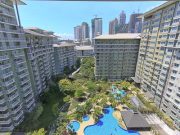As the Philippine economy’s gross domestic product continues to grow at an estimated rate of 6.0 % in 2025 and 6.1 % in 2026, according to the Asian Development Bank (ADB), the commercial real estate sector rides the same wave of opportunity. With a projected total worth of USD 5.82 trillion in 2025, this market surge offers an ideal time for brokers and property owners to act. Whether you’re already in the real estate investment space or planning to join, now is the moment to strike the iron while it’s hot.
A glance at mainstream outlets like the Philippine Daily Inquirer and online discussions on real estate finance reveals the same burning question:
“How do I begin?”
The key to success, especially in a developing economy like the Philippines, is to remain well-informed, adaptable, and strategically focused.
Why Resilience Matters in Real Estate
It’s natural to feel anxiety when entering a market you aren’t fully familiar with. While GDP growth is promising, global shocks such as geopolitical tensions or financial market bubbles can swiftly impact consumer demand.
A recent example: Manila’s condo market slowdown in early 2025, driven by the departure of Philippine Offshore Gaming Operators (POGOs), resulted in tenant flight and rental vacancies. Despite this, experts anticipate a market rebound and longer-term resilience, thanks to fundamental demand from locals, overseas Filipino workers, and young professionals who are also concerned about property valuations.
The property landscape in the Philippines is a shifting tide, but the tide never disappears—it only shifts. As a broker or owner, you can navigate this dynamic by staying relevant to market demand, visible, and trusted, with tools and insights from trusted platforms like HousingInteractive.
Top 3 Tactics to Build Resilience

1. Monitor Market Data Weekly to Refine Your Strategy
In real estate, consistency beats speculation. Economic literacy is not a choice. It’s a core skill.
Brush up daily on the business pages of the Inquirer, Philippine Star, or BusinessWorld, and supplement with global publications like Bloomberg, Financial Times, or Politico. Also monitor local stock trends via platforms like Bilyonaryo.ph, and international markets, because cross-border capital flows can affect interest rates, investment, and property prices.
If you prefer digital tools, you can load Stocks or Bloomberg apps on your phone for real-time updates. The key is daily awareness.
For brokers or owners who find macroeconomics daunting, we offer TalkShop Sales Academy’s Customer Service & Salesmanship Course. The course focuses on:
- Understanding economic indicators and local market trends
- Prospecting based on a supply-demand dynamic landscape
- Sales psychology and closing strategies
These areas will empower brokers and property owners to make informed decisions, adapt to market shifts, and identify emerging opportunities. Understanding economic indicators such as GDP growth, inflation rates, and mortgage rates helps anticipate changes in market conditions and consumer behavior. Keeping abreast of market trends allows you to recognize evolving consumer preferences and adjust your listings accordingly.
Prospecting grounded in supply-demand dynamics ensures that your efforts target high-demand property types and locations, mitigating risks associated with market volatility. Additionally, mastering sales psychology and closing strategies enhances your ability to build trust with clients, address objections effectively, and secure deals even in challenging environments.
By integrating these skills, brokers and owners can develop a competitive edge, foster sustainable growth, and contribute to the overall resilience of the Philippine real estate market.
Explore the course and its benefits on the TalkShop website.
2. Diversify Listing Types to Spread Investment Risk
Unlike gambling, where you bet it all on one number, business thrives on diversification. Channel your real estate strategy across multiple segments to minimize risk and stabilize returns.
| Listing Type | Target Market | Why It Matters |
| Rentals | Students, young professionals, and roommates | Steady demand; easier entry |
| Mid‑Market | Middle‑class families, expats | Balances affordability & amenities |
| High‑End | Wealthy real estate investors, foreigners | High yield & asset appreciation |
A. Rentals
These are your entry points.
- Properties: apartments, townhouses, single-family homes
- Demand: consistent among students, young adults, and working professionals
- Location: near universities and urban centers
Rentals provide a reliable source of steady income, especially in areas with a high concentration of students and young professionals who prioritize convenience and affordability. These properties often require less upfront investment compared to other segments, making them ideal for new investors or brokers looking to establish a foothold in the market. Additionally, rental properties tend to have lower vacancy risks when located near educational institutions or business hubs, where demand remains relatively stable year-round.
Investing in rental properties also offers flexibility in terms of property management and pricing strategies. Property owners can adjust rental rates in response to market dynamics, seasonal trends, or improvements made to the property. Moreover, rentals can serve as a gateway to building a diversified portfolio, allowing investors to gradually expand into mid-market or high-end listings as their experience and capital grow.
Understanding tenant needs and maintaining good landlord-tenant relationships are crucial for maximizing returns in the rental segment. Brokers and owners who focus on providing well-maintained, secure, and accessible rental units will attract quality tenants and reduce turnover, ultimately enhancing long-term profitability.
B. Mid-market
Think middle-income renters or small-time investors.
- Properties: condo units, gated communities
- Features: security, amenities (pools, gyms), convenience
- Target: middle-class Filipino families, expats, and tourism-affiliated tenants
- Location: urban and outskirts areas
The mid-market segment is a vital pillar in the real estate landscape, offering a sweet spot for both affordability and diverse investment opportunities, and desirable living conditions. This category attracts a diverse group of tenants and buyers who prioritize safety, community amenities, and accessibility. For property owners and brokers, mid-market properties represent a balanced investment strategy that can mitigate risks associated with more volatile high-end markets.
In recent years, the demand for mid-market properties has been buoyed by the expanding middle class and a growing number of expatriates seeking quality housing options outside the premium brackets, as supported by economic forecasts. These properties often come with features such as gated security, recreational facilities like swimming pools and gyms, and easy access to transportation hubs, schools, and commercial centers.
Mid-market properties also offer promising investment strategies due to their steady demand and potential for appreciation in property values and higher resale values, especially in emerging urban areas and developing outskirts. They tend to be more resilient during economic shifts, as middle-income families and professionals continue to seek stable housing solutions even amid shifting economic conditions.
From a market insights perspective, brokers who focus on mid-market listings can leverage data analytics to identify the most sought-after amenities and locations, tailoring their offerings to meet evolving consumer preferences. This segment also benefits from strategic partnerships with developers who emphasize sustainable properties and climate resilience, aligning with the growing awareness of environmental risks in property investment.
Furthermore, mid-market properties often serve as an entry point for new investors looking to diversify their portfolios without incurring the higher costs associated with luxury real estate. By balancing affordability with quality, these properties contribute to the overall real estate resilience of the market, enabling brokers and owners to thrive in a shifting market marked by rising costs and economic factors.
In summary, the mid-market segment is not only a key driver of demand but also a critical factor in fostering sustainable growth within the Philippine real estate sector. By understanding its unique dynamics and leveraging technology and market data, brokers and owners can position themselves for success in this evolving and complex environment.
C. High-end
For the sophisticated investor.
- Properties: luxury condos, mansions, penthouses
- Features: prime locations, smart home tech, tight security
- Target: affluent Filipinos, foreign buyers, high-net-worth individuals
- Location: high-security gated communities, suburbs
High-end properties cater to a niche market that values exclusivity, privacy, and premium amenities. These properties often feature cutting-edge smart home technology, such as automated lighting, climate control, and advanced security systems, providing both convenience and peace of mind. Their prime locations typically include prestigious neighborhoods or scenic areas that offer privacy and prestige, which are highly sought after by wealthy buyers.
Investing in luxury real estate can offer significant returns through asset appreciation, especially in major urban centers where demand for upscale living remains strong. Additionally, these properties often attract foreign investors looking for stable, high-value assets in the Philippine real estate market. The high-end segment also benefits from lower vacancy rates and longer lease terms, contributing to steady income streams for property owners.
Given the rising insurance costs and increasing awareness of climate resilience, many luxury developments incorporate sustainable development practices and energy-efficient upgrades. These features not only reduce operational costs but also enhance the long-term value of the property, appealing to environmentally conscious buyers.
For brokers and owners, focusing on high-end listings requires strategic planning and a deep understanding of buyer preferences, including the desire for mixed-use developments that combine residential luxury with retail and recreational amenities. This competitive advantage can position real estate companies to thrive in a volatile market by attracting a diverse range of affluent clients seeking both investment opportunities and lifestyle benefits.
Moreover, high-end properties often serve as flagship assets that elevate the reputation of brokers and developers, reinforcing their standing in the real estate industry. By leveraging technological advancements and market insights, professionals can tailor their marketing strategies to highlight the unique features and emerging trends that drive demand in this premium segment.
With HousingInteractive, you can easily filter by price range, location, or type of listing—from budget rentals to luxury estates.
3. Nurture Relationships, Especially During Slow Periods
Cold markets don’t mean cold leads. In real estate, relationships are part of your asset base and can be one of the most valuable resources during slow periods. Even when transaction activity slows down, maintaining and nurturing these connections keeps your pipeline warm and ready for when the market resilience picks up again.
Here are some effective strategies to stay engaged and visible during quieter months:
- Social media presence: Consistently post new listings, market updates, and helpful tips on platforms like Facebook, Instagram, and TikTok. These channels allow you to reach a broad audience and keep your brand top-of-mind among potential clients.
- Visual content creation: Utilize tools like Canva to design eye-catching, professional-looking advertisements and posts. High-quality visuals grab attention and can significantly increase engagement rates. Combining this with paid Facebook marketing helps target specific demographics, ensuring your listings reach the right audience efficiently.
- Client outreach and relationship building: Regularly check in with past and potential clients through personalized messages, newsletters, or phone calls. Sharing market insights, offering free consultations, or simply asking how they’re doing fosters trust and keeps your network engaged.
- Educational content and thought leadership: Share informative articles, market forecasts, or tips on buying and selling properties. Positioning yourself as a knowledgeable resource builds credibility and encourages clients to turn to you when they’re ready to transact.
- Community involvement: Participate in local events or sponsor community activities to increase your visibility and demonstrate your commitment to the neighborhoods you serve.
By staying top-of-mind during market lulls, you increase the likelihood of warm leads converting into deals once the market rebounds. Your consistent presence not only signals reliability and professionalism but also positions you as a trusted advisor in a competitive and shifting real estate landscape. Remember, in real estate, relationships are long-term investments that pay dividends over time.
Resilience Is Sound Business Logic

The Philippines continues to stand out as a consumption-driven economy, with rising purchasing power and a strong middle class. HSBC’s Pramoth Rajendran, Head of International Wealth and Premier in the Philippines, predicts that by 2030, the number of Filipino households with asset values over USD 250,000 will double.
With nearly 40% of households falling into the mid-market category, there’s a ready base of long-term buyers and renters. That means whether you’re listing, searching, or closing, the real estate market in the Philippines offers meaningful opportunities if you adapt and prepare.
Ready to list smarter, search better, and close faster? For more insights, courses, and market trends, visit HousingInteractive.com.ph. If you found this article helpful, like, share, and subscribe as your support fuels more expert guidance on Philippine real estate investment.

























